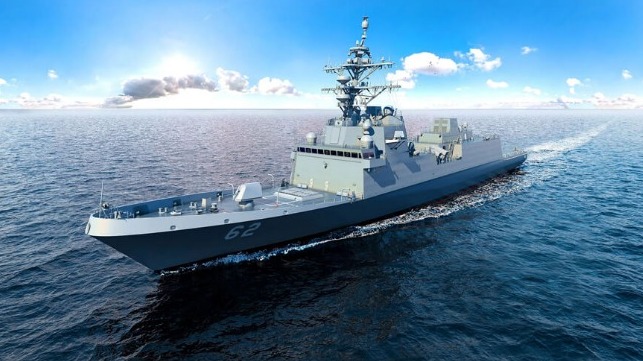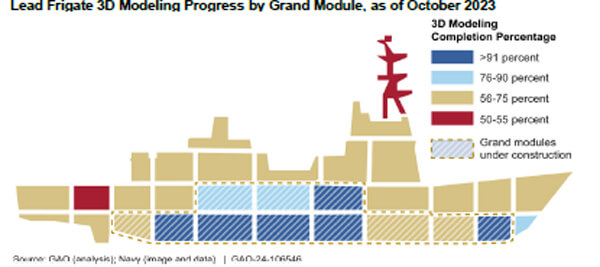GAO Criticizes Missteps and Unstable Design for Constellation Frigate

Citing multiple missteps in the design process, the Government Accountability Office issued a report today with five recommendations to get the U.S. Constellation frigate construction program back on track. The report cites an unstable design process noting that work on the first vessel is largely at a standstill months after construction began and the delivery schedule for the new vessels is compromised.
The GAO is making five specific recommendations in its 52-page report after it reviewed the status of the project. The Navy has fully accepted four of the points which focus on restructuring the “design stability metric,” as well as improving the metric to assess the design stability before beginning construction of a second vessel. Last week, the Department of Defense reported that it had exercised the options for the fifth and sixth vessels of the class after having placed an order for up to 10 ships in 2020.
The report outlines how the Navy was looking to accelerate construction for this new class of vessel, a multi-mission, small surface combatant warship. The Navy aims to build up to 20 frigates at a combined cost of $22 billion. To achieve the goals for accelerating the program, the Navy planned to incorporate proven elements of other vessels and modify the design of an existing class of vessels developed by Fincantieri.
“However, the Navy’s decision to begin construction before the design was completed is inconsistent with the leading ship design practices, and jeopardizes this approach,” concludes the GAO. While work was begun on the grand modules of the vessel, the GAO published a chart that shows the vast majority of the design was calculated as of October 2023 to be less than three-quarters complete.
Only two systems, the propulsion and machinery control systems, have yet to be demonstrated. The GAO calls for using the construction delays to conduct land-based testing of these two unproven systems. As such, the GAO believes it would reduce the chances of problems once the vessel is on the water.

The Navy confirmed that the project is far behind the original schedule for delivery of the first vessel in April 2026. The GAO reports that the Navy now forecasts the first ship will be delivered three years late in 2029. The contract for the sixth ship called for a 2030 delivery.
The GAO wants the Navy to restructure its design stability metric to measure progress based more on quality than quantity of design documents. They also warn that the Navy must use an improved metric to assess the stability of the design before proceeding to the second vessel. According to the GAO, the flawed system limits insights into whether the program’s schedule is achievable.
“If the Navy begins construction on the second frigate without improving this metric, it risks repeating the same errors that resulted in construction disruptions and delays with the lead frigate,” the GAO warns.
The GAO believes the design should be completed before construction begins on any of the grand modules. They also call for a review of the procurement process before acquiring an 11th frigate.
It is the latest in a series of highly critical reports from the GAO about the Navy and Coast Guard’s construction programs. Last year, the GAO found similar design problems in the Polar Security Cutter program and the new Coast Guard cutters.
No comments:
Post a Comment